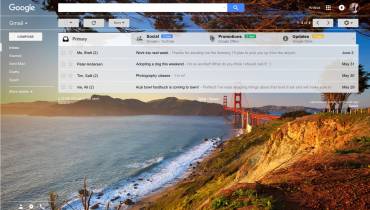6 Signs It's Time to Move Your Blog to Better Web Hosting
![[node:title]](/sites/default/files/styles/wide/public/Move%20Your%20Blog%20to%20Better%20Web%20Hosting.jpg?itok=bzf_1oij)
Web hosting is crucial to the success of any blog or website, especially one in a competitive niche.
It may seem sensible for a blog to take an economical route when starting out and to go with shared hosting. Why invest until you know people are going to read what you have to say, right?
That is true to a certain extent, but you also need to be aware of the drawbacks of poorer quality web hosting and how inadequate hosting can affect your blog or website’s popularity.
Signs You Need Better Web Hosting
Here are key signs of inadequate web hosting and drawbacks that indicate it’s time to move your blog/website to better web hosting:
1. Does your blog load slowly?
The speed at which your website loads is crucial to its success. Faster websites provide a better user experience for visitors and this in turn gives you a better chance of successfully optimizing for search engines like Google and Bing.
Website load speed matters for both desktop and mobile users. However, it matters even more for mobile users who seem to be in a rush all the time. Optimizing your website for speed and getting it to run as fast as it possibly can can take effort and money, because there are many factors involved and you may need a web developer to make adjustments to your website’s code.
While you may not be able to do everything at once one way to easily speed up your website is by choosing the right web hosting service. From your shared hosting plan, you can upgrade to a Virtual Private Server (VPS) or Solid State Drive (SSD). You can get a VPS host for around £20 ($28) per month. The more resources you need the more you will pay.
Top Tip: If you’re not sure whether your blog loads quickly or not, you can use one of the many tools available to find out. Options include Web Page Test, Google Page Speed Tool and Pingdom.

2. Is shared hosting becoming overcrowded?
When you place your website on a shared hosting plan, you're not the only one using that particular server. Unfortunately, you won’t be able to control the behavior of other websites that are using the same server resources.
It only takes a few websites to hog the server’s key resources. Before you know it, the performance of the server will be negatively affected. The first sign this is happening may be that you notice your website performing sluggishly.
Web hosts can monitor resource consumption and restrict allocations. However, when you are on shared hosting they really want you to upgrade, so the level of service they will feel is acceptable may not be what you feel is acceptable for your readers.
With VPS hosting, look for a host that allows you to scale up or down according to your needs. You can then add more power as your visitor numbers grow.
3. Are you worried about security issues?
The last thing you want for your blog is for your data to be stolen. An even bigger problem is a DDoS attack that can completely destroy or severely dent your years of hard work on the blog.
Such security concerns and other cyber-attack related concerns such as malware, ransomware, and phishing are legitimate security worries for you as a blog owner because, in many cases, it is often out of your hands.
An attack on a website hosted on the same server as your blog can spread to you. A small web host may not have the manpower, know-how or infrastructure needed to ensure your site is always secure. This is why it’s important to move on to a better host as soon as you can afford to, even if you haven't been a victim of any attacks yet.
Even with robust backups, such attacks are not always easy to recover from. You may recover your blog posts from a backup but how can you remedy the traffic lost during and in the aftermath of the attack?
In order to protect your business and reputation, it is important to select a trusted host company that has reliable security measures implemented - preferably one that allows access to a plesk control panel.
The host you choose should offer security services and apps such as two-factor authentication, website scanners, security plugins, as well as an extra layer of security. Check if your current host offers such security features. If they don't, it might be time to move on, so you don't end up being the victim of a cyber-attack.
Consider a hosting option that allows you to have root access. With root access, you can install just about anything you want on your server. You’ll also have full control over your service firewall and be able to recompile apache to use a particular version of PHP and PHP modules.

4. Is your blog growing quickly?
As your blog begins to grow, you’ll gradually need higher requirements for RAM, CPU, email, and disk space. It goes without saying that your web host must be able to grow along with your website if you don’t want to lose blog readership. This is why you must choose a scalable web host right from the outset, even if you'll be starting out on a shared hosting plan.
5. Is your host’s IP reputation solid?
Using a web host that has been blacklisted is a bad idea, as it can affect your blogging career in many ways, from your search ranking to email deliverability. If you your server is detected to be hosting malware or sending SPAM, it is likely to end up being blacklisted.
Sometimes, other clients being hosted on the same server as you may run out-of-date software or insecure applications. This is unlikely due to malicious intent, but rather a lack of understanding or a simple oversight.
A trusted host can address such problems proactively by constantly managing and monitoring outgoing emails and software hosted on the server, using special tools. However, these tools are not free or particularly cheap, so you shouldn’t expect a low-budget host to invest in them.
If your host begins to attract bad reviews or you find that your server hosts malware, and nothing is being done about it, it is time to move on. You can keep tabs on your server’s IP reputation and find out if it’s blacklisted using one of the many software options available.
6. Do you need to run unsupported software?
There may come a time when you need to run software that is unsupported by your web host. Either that or your web host offers an alternative that is not quite as advanced as what your site requires. When you find that you have to run such tools, it’s best to upscale as soon as possible. Before you switch web hosts, be sure to check they support such software.
Choosing your first web host initially was probably not an easy decision, but you need to conduct even more research before you switch. At least this time, you’ll know what you’re looking for.




















